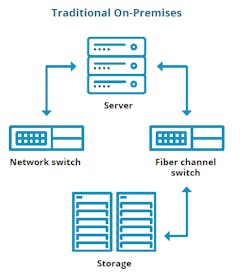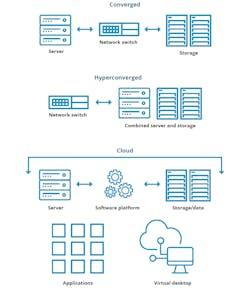The Data Center and Cloud Balance — New Key Considerations
We continue our article series on the new balance between the cloud and the modern data center. This week, we consider new key considerations in the data center and cloud balance.
Our digital society can’t run without the strength and power of physical infrastructure. An increase in data reinforces the need for digital infrastructure. In 2012, we crossed into the zettabyte era, and that is, the data in our digital ecosystem, for the first time, exceeded a zettabyte. That number continues to increase today, with estimates of around 175 zettabytes by 2025.
The major balance that we’ve been discussing so far revolves around deploying new technology solutions, like the cloud, and where digital modernization impacts physical infrastructure. Too often, we look at modernization efforts as server upgrades and new pieces of software.
However, the digital evolution is happening on the data center and cloud infrastructure front.
The new cloud and data center balance
First, it’s essential to understand the various types of data center models.
- Traditional Data Centers: These facilities are designed to support one customer or client. They’re often built at a corporate campus and are typically managed by in-house staff.
- Colocation: This is a multi-tenant data center provider. These data center models can range from just a few thousand square feet to campuses over a million square feet. The largest colocation providers are known as hyperscale data centers.
- Cloud (Private): This is a direct subset of a colocation. Many private clouds exist directly within a colocation ecosystem. However, some organizations will build or lease facilities to create a custom private cloud ecosystem.
- Cloud (Public): This defines sizeable public cloud services like AWS, Azure and GCP. Public cloud providers usually have their own data centers, often as large as the hyperscale providers in the colocation space. It’s important to note that public cloud providers do not exclusively build their data centers, and they often partner with colocation and hyperscale colocation providers to extend their services.
- Edge: This class of data centers is designed to be smaller and often modular in architecture. Their purpose is to help bridge the connectivity gap, reduce latency and facilitate faster delivery of applications, data and services closer to businesses, cities, users and physical devices like cars, phones and other IoT devices.
Within each of the models above, there are internal deployment considerations. By understanding each data center model, IT professionals are implementing a hybrid solution for greater flexibility, capacity and cost savings.
With this in mind, there has been a shift in how people approach traditional data centers, colocations and the cloud. It’s important to note that the cloud isn’t going anywhere, and cloud services are excellent for elastic computing, serverless architecture and the rapid distribution of workloads. However, real concerns remain regarding how enterprises want to use cloud computing and the financial impact of working with the cloud.
These trends indicate that most are still figuring out what should live in colocation and what should reside in the cloud. The good news is that these exercises are great for everyone. Workloads that belong in the cloud will be more adequately provisioned, while dedicated resources that are expensive in the cloud will be moved on-premises. This translates to more organizations leveraging their data centers or partners to host applications, data sets and even new workloads that may have resided in the cloud at one point.
Download the full report, Top Methods To Modernize and Balance Your Infrastructure, featuring Service Express, to learn more. In our next article, we'll explore how to create this effective balance with trusted partners to help guide you on the journey.
About the Author






